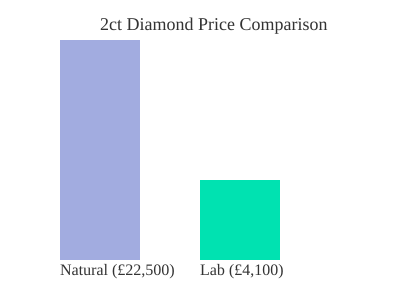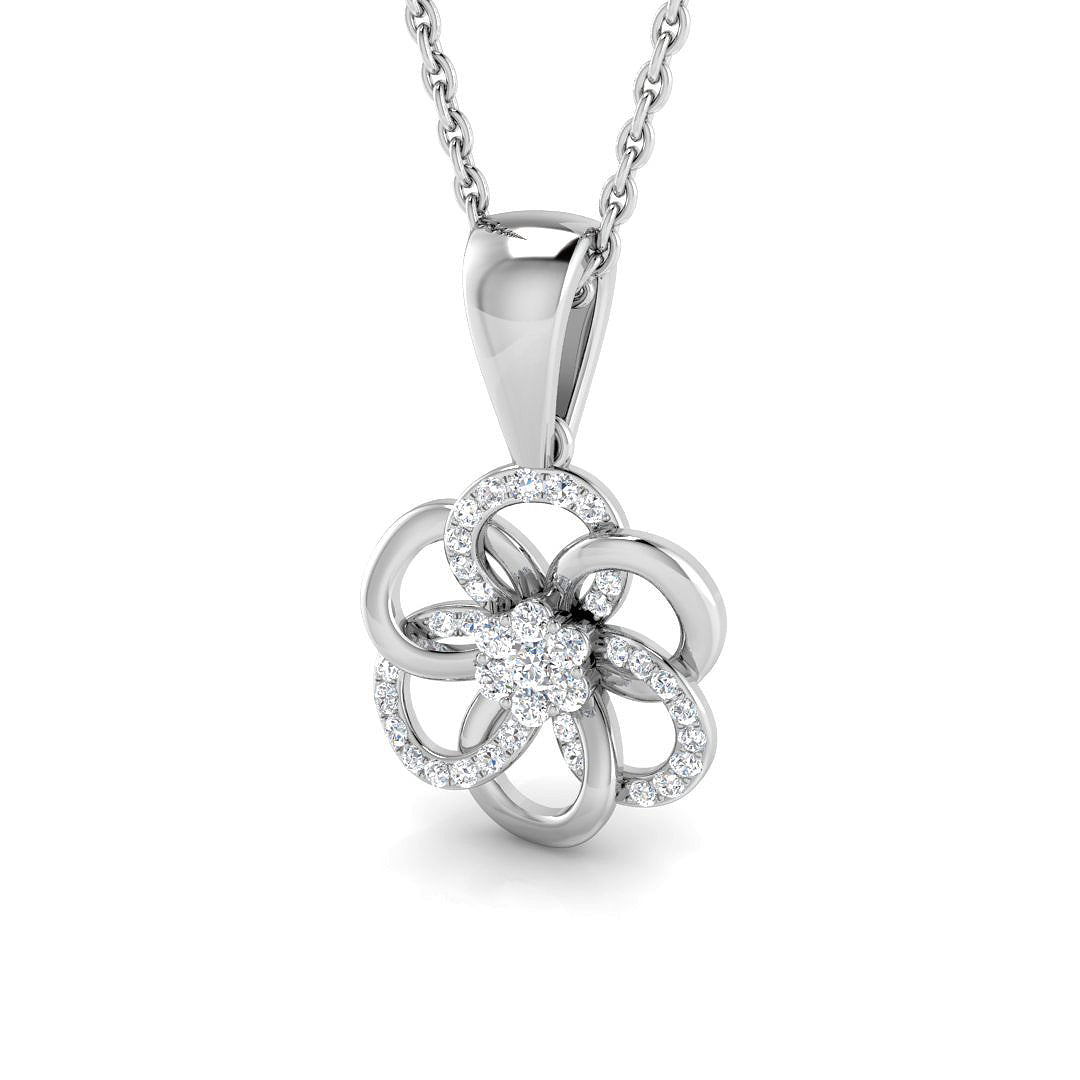I'll admit, the first time I heard about lab diamonds, I thought someone had finally invented the diamond tree. Spoiler: not quite, but what I discovered as an ex-diamond trader flipped my views (and potential spending habits) upside down. Stick around as we wade through shiny myths, awkward truths, and the one argument at every dinner party: Are lab diamonds the real deal, or are we all just desperate to save a wad of cash?
Shattering Myths: Lab Diamonds vs Natural Diamonds (And A Wallet's Tale)
Let’s get straight to the jaw-dropping bit: the price. When I first compared the cost of Lab Diamonds to Natural Diamonds, I nearly choked on my tea. Picture this—a sparkling, two-carat natural diamond sitting pretty in a jeweller’s window, price tag reading £22,500. Now, glance over at the lab-grown equivalent. Same size, same sparkle, but the price? £4,100. Gulp. That’s an £18,400 difference staring you in the face. It’s not just a gap; it’s a canyon.
Honestly, once you see numbers like that, it’s hard not to start daydreaming. I mean, what would you do with an extra £18,400? Personally, I started plotting a spontaneous trip to Sardinia, first-class flights and all, with enough left over for a cheeky gelato or three. It’s the kind of diamond comparison that makes you question everything you thought you knew about diamond pricing.
But here’s the kicker—lab-grown diamonds aren’t “fakes” or “lesser” stones. Research shows that Lab Diamonds are chemically and optically identical to their natural counterparts. “They are both made of carbon. Correct? And they are both chemically and optically the same.” You could line them up side by side, and unless you’ve got a microscope and a PhD in geology, you wouldn’t spot the difference. Even a diamond tester would shrug and say, “real diamond.”
Both Lab Grown Diamonds and Natural Diamonds rate a solid 10 on the Mohs scale for hardness. So yes, they’ll both scratch your window (not that I recommend trying). The only real difference? Their origin story. Natural Diamonds are forged over billions of years deep within the earth, while lab diamonds are born in a matter of weeks, thanks to some very clever science.
So why the massive price gulf? It’s not about quality. Studies indicate that lab diamonds cost 60-85% less because they’re produced more efficiently, not because they’re inferior. The diamond pricing game is notoriously complex—think supply manipulation (looking at you, De Beers), hefty retail markups, and a dash of public perception. But when you strip all that away, both types are genuine carbon crystals.
There’s also the ethical angle. Lab diamonds are often seen as the more responsible choice, with fewer environmental and human-rights concerns attached. And while resale value is lower for both lab and natural diamonds compared to retail, natural diamonds don’t always hold their value as well as people assume.

The Not-So-Obvious: Value, Resale, And Why Emotions Always Win
Let’s get brutally honest about diamond resale value—it’s a minefield, whether you’re talking lab diamonds or natural diamonds. The resale market is, frankly, savage. Most buyers don’t realise that the moment you walk out of the shop, that sparkling stone on your finger is worth 40-80% less than what you just paid. And if you bought poorly? Ouch. You might as well have thrown your cash into the Thames.
Here’s the thing: retail price does not equal resale price. It never has. Companies like De Beers have spent decades controlling supply and demand, keeping diamond pricing artificially high. But when it comes time to sell, the market doesn’t care about your receipt or the romantic story behind your purchase. Unless you’re in possession of a museum-worthy, 100-carat miracle, your diamond’s “value” is mostly sentimental. That’s the cold reality, and it’s the same for both lab-created and natural diamonds.
Now, there’s a common misconception floating around: that carat and clarity are the main drivers of diamond quality and future value. Honestly, it’s the diamond cut that matters most. The cut is what gives a diamond its fire, its personality—its ability to dazzle, even in a dimly lit pub. Research shows that cut is the biggest factor in both perceived beauty and whatever resale value you might cling to.
Let me share a quick story. A mate of mine once tried to sell his engagement ring to fund a backpacking trip. He’d imagined it would cover flights, hostels, maybe a few pints along the way. In reality? He barely scraped enough for a train ticket to Brighton. That’s the resale market for you—brutal, unforgiving, and completely indifferent to your dreams.
And it’s not just about buying the right diamond. Even if you’re savvy, the numbers are still grim. Take a look at this:
Diamond | Retail Price | Average Resale Value | Potential Loss |
|---|---|---|---|
Jared F Colour VS1 | £9,080 | £5,448 (60%) | £3,632 |
Similar Quality (Other Vendor) | £7,000 | £4,200 (60%) | £2,800 |
Improper Buying | £9,080 | £1,816 (20%) | £7,264 |
So, why do we still buy diamonds? Simple.
"Diamonds are not a monetary investment... They're an emotional investment. We buy these things. We do it for the people we love, right?"
In the end, it’s not about economics—it’s about emotion. And that, more than anything, is what keeps the diamond business alive.
Lab Diamonds Are NOT Created Equal: HPHT vs CVD (And The Secret Sauce Is In The Science)
Let’s get one thing straight: not all Lab Diamonds are created equal. If you’ve ever wondered why some lab grown diamonds have that irresistible sparkle while others look a bit… well, off, the answer lies in the science. There are two main methods for creating these gems: HPHT (High Pressure High Temperature) and CVD (Chemical Vapour Deposition). And yes, I have a strong preference—let me tell you why.
HPHT Diamonds: This is the premium method, and honestly, it’s my favourite. HPHT mimics the earth’s natural process, using intense heat and pressure to grow diamonds that are “as grown”—meaning what you see is what you get. There’s no need for post-growth treatments to enhance the colour or clarity. As I always say,
"HPHT, high pressure and high temperature, is my favourite method. These diamonds are as grown diamonds, meaning there’s no need to use a post growth treatment to enhance the colour or clarity."
What I love about HPHT diamonds is their honesty. The colour, the flaws, the character—they’re all there, just as nature intended. You’re not getting a stone that’s been zapped or tweaked after the fact. Sure, this method is more expensive, but research shows HPHT diamonds are generally higher in quality, with better colour and clarity. If you’re after diamond quality that rivals nature, HPHT is the way to go.
CVD Diamonds: Now, let’s talk about CVD. This method is more affordable and allows labs to produce diamonds in greater volumes. But here’s the catch: CVD diamonds often come out with a grey or brown tinge. To make them look more appealing, labs use post-growth treatments to improve their colour and clarity. Sometimes, you really do get what you pay for. CVD diamonds are mass-produced, and while they can look good after a bit of lab magic, they rarely match the natural-like qualities of HPHT diamonds.
My Mini-Obsession: I’ll admit it—I’m a bit obsessed with sourcing only HPHT diamonds from my preferred seller. There’s something about seeing those unvarnished, as-grown flaws that feels more honest and, frankly, more beautiful. It’s like each diamond has its own story, rather than being just another shiny stone on the production line.
Tips for Buyers:
Always ask about the growth method—HPHT or CVD—before buying any lab grown diamonds.
Check for reputable certifications. Research indicates that certification and seller reputation are absolutely essential for ensuring diamond quality.
Don’t forget: the best diamond cut, regardless of origin, is still the number one factor for fire and brilliance.
So, next time you’re dazzled by a lab diamond, remember: the secret sauce is in the science. And sometimes, the most honest sparkle comes from the method that’s closest to nature.
Conclusion: Your Diamond, Your Call – But Know The Ground Rules
Let’s be honest: when it comes to the great debate between Lab Diamonds and Natural Diamonds, there’s no single right answer. I’m not here to sway you one way or the other. As I’ve said before,
"I'm not trying to make a case for lab diamonds against natural. To each their own."
Both have their place in the world of engagement rings, wedding bands, and those little velvet boxes that make hearts race. The real question is—what matters most to you?
Research shows that personal happiness trumps perceived investment every time. It’s not about what your spreadsheet says, or what your mate’s cousin’s jeweller reckons will “hold value.” It’s about that grin you can’t hide when you catch your ring sparkling in the sunlight. That’s the real test, isn’t it?
Let’s break it down. Lab diamonds are a brilliant option if you want size, quality, and a clear conscience for less. They’re chemically and physically identical to natural diamonds, but grown in a lab—no billion-year wait required. Plus, they can cost up to 85% less than their earth-mined counterparts. If you’re the sort who likes to get the most for your money, or if the ethics of diamond mining weigh on your mind, lab diamonds are a smart choice. You’re not being cheap; you’re being savvy.
On the other hand, natural diamonds carry a certain mystique. There’s something undeniably romantic about a stone that’s been forming for billions of years, deep in the earth. If tradition, rarity, and that “earth-grown” story speak to you, then natural diamonds might be your pick. Just know what you’re paying for—the story, the legacy, the history.
But here’s the ground rule, and I can’t stress this enough: Diamond Cut matters more than anything else. A well-cut diamond, whether lab or natural, will outshine a bigger, poorly cut stone every day of the week. Personally, I’d take a smaller, bright-as-the-sun diamond over a sprawling, dull one—lab or natural. Every. Single. Time.
So, what’s it going to be? Splash out on the ring, or save for that round-the-world ticket? It’s a tough call. But remember, both options are valid—just know the facts before you splurge. At the end of the day, the smartest buy is the one that makes you happy every time you look at your finger. Forget the spreadsheets (I say this as a chronic spreadsheet obsessive). Make the most of your money, or your memory. That’s the real diamond buying guide, if you ask me.



